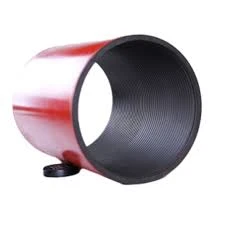- Afrikaans
- Albanian
- Amharic
- Arabic
- Armenian
- Azerbaijani
- Basque
- Belarusian
- Bengali
- Bosnian
- Bulgarian
- Catalan
- Cebuano
- Corsican
- Croatian
- Czech
- Danish
- Dutch
- English
- Esperanto
- Estonian
- Finnish
- French
- Frisian
- Galician
- Georgian
- German
- Greek
- Gujarati
- Haitian Creole
- hausa
- hawaiian
- Hebrew
- Hindi
- Miao
- Hungarian
- Icelandic
- igbo
- Indonesian
- irish
- Italian
- Japanese
- Javanese
- Kannada
- kazakh
- Khmer
- Rwandese
- Korean
- Kurdish
- Kyrgyz
- Lao
- Latin
- Latvian
- Lithuanian
- Luxembourgish
- Macedonian
- Malgashi
- Malay
- Malayalam
- Maltese
- Maori
- Marathi
- Mongolian
- Myanmar
- Nepali
- Norwegian
- Norwegian
- Occitan
- Pashto
- Persian
- Polish
- Portuguese
- Punjabi
- Romanian
- Russian
- Samoan
- Scottish Gaelic
- Serbian
- Sesotho
- Shona
- Sindhi
- Sinhala
- Slovak
- Slovenian
- Somali
- Spanish
- Sundanese
- Swahili
- Swedish
- Tagalog
- Tajik
- Tamil
- Tatar
- Telugu
- Thai
- Turkish
- Turkmen
- Ukrainian
- Urdu
- Uighur
- Uzbek
- Vietnamese
- Welsh
- Bantu
- Yiddish
- Yoruba
- Zulu
Stainless Steel Pipe Couplings for Reliable Fluid Connections and Easy Installation
Understanding Stainless Steel Pipe Couplings Importance, Types, and Applications
Stainless steel pipe couplings are essential components used in piping systems across various industries. Their primary role is to connect two sections of pipe, allowing for the seamless transfer of liquids or gases while maintaining system integrity and preventing leaks. With their durability, resistance to corrosion, and versatility, stainless steel couplings have gained widespread popularity in sectors such as plumbing, oil and gas, food processing, and pharmaceuticals.
What Are Stainless Steel Pipe Couplings?
A pipe coupling is a fitting used to connect two pipes together. It can be classified into two main types threaded and unthreaded (or socket weld). The choice between these types depends largely on the specific application, the materials involved, and the desired mechanical properties.
Stainless steel is the material of choice for many couplings due to its exceptional resistance to corrosion, especially in harsh environments. The addition of chromium in stainless steel forms a protective oxide layer that prevents rust and tarnish, making it suitable for both indoor and outdoor installation. This corrosion resistance significantly extends the lifespan of piping systems, reducing maintenance costs and downtime.
Types of Stainless Steel Couplings
1. Threaded Couplings These come with internal threads that allow for easy connection to male-threaded pipes. They are ideal for applications that require disassembly and reassembly. Threaded couplings are commonly found in water, gas pipelines, and HVAC systems.
2. Socket Weld Couplings These couplings are designed for use with pipes that are welded at the ends. In this configuration, the pipe is inserted into the coupling socket, and then a fillet weld is applied around the circumference. Socket weld couplings are favored in high-pressure applications as they provide a strong, durable connection.
3. Butt Weld Couplings For applications requiring a more permanent connection, butt weld couplings are a popular option. In this method, the ends of the pipes are joined together and welded at their ends. This creates a strong joint that can withstand high pressures and temperatures.
stainless pipe coupling

4. Compression Couplings These fittings utilize a compression mechanism to create a secure connection between pipes. Compression couplings are often used for connecting different materials or when a temporary connection is needed.
Applications of Stainless Steel Pipe Couplings
Stainless steel couplings are widely utilized across various industries due to their robustness and adaptability. Here are some common applications
- Oil and Gas Industry In the extraction and transportation of oil and gas, couplings are crucial for joining pipelines. The robust design of stainless steel couplings ensures they can withstand the high pressures and corrosive environments often found in this sector.
- Food and Beverage Processing Hygiene is paramount in food processing, and stainless steel’s non-porous surface makes it the preferred material for couplings in this industry. They enable easy cleaning and prevent contamination, essential for meeting health and safety standards.
- Water Treatment Facilities Stainless steel pipe couplings are used to transport treated water. Their resistance to corrosion and biofouling ensures the longevity and reliability of water systems.
- Pharmaceutical Manufacturing In pharmaceutical applications, the integrity of piping systems is crucial. Stainless steel couplings provide a sterile environment, preventing leaks and contamination of sensitive substances.
Conclusion
In summary, stainless steel pipe couplings play a critical role in ensuring the efficiency and safety of piping systems in numerous industries. Their various types cater to different operational needs, providing solutions for both temporary and permanent connections. The inherent properties of stainless steel—such as corrosion resistance and strength—make these couplings an optimal choice for industries requiring high durability and reliability. As industries continue to evolve, the importance of these fittings in maintaining efficient and safe operations will remain paramount.
-
Tubing Pup Joints: Essential Components for Oil and Gas OperationsNewsJul.10,2025
-
Pup Joints: Essential Components for Reliable Drilling OperationsNewsJul.10,2025
-
Pipe Couplings: Connecting Your World EfficientlyNewsJul.10,2025
-
Mastering Oilfield Operations with Quality Tubing and CasingNewsJul.10,2025
-
High-Quality Casing Couplings for Every NeedNewsJul.10,2025
-
Boost Your Drilling Efficiency with Premium Crossover Tools & Seating NipplesNewsJul.10,2025







